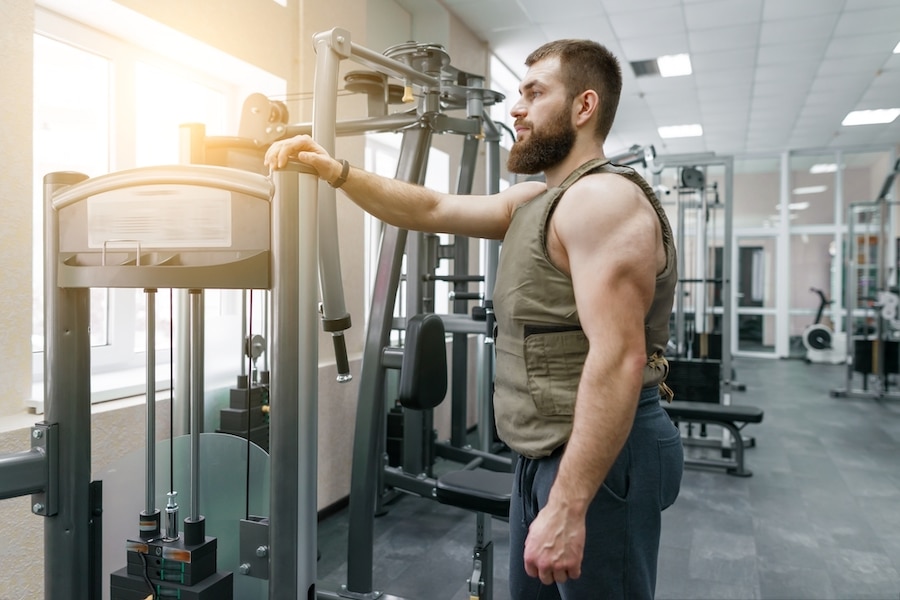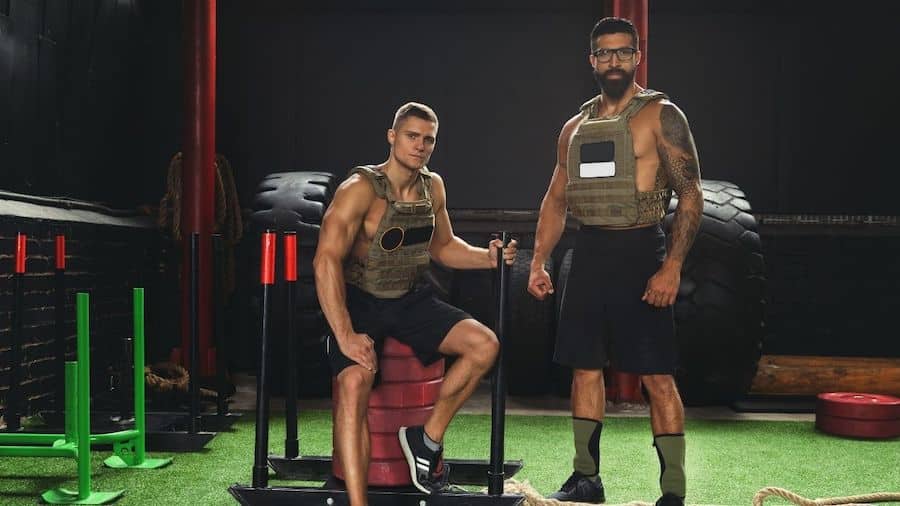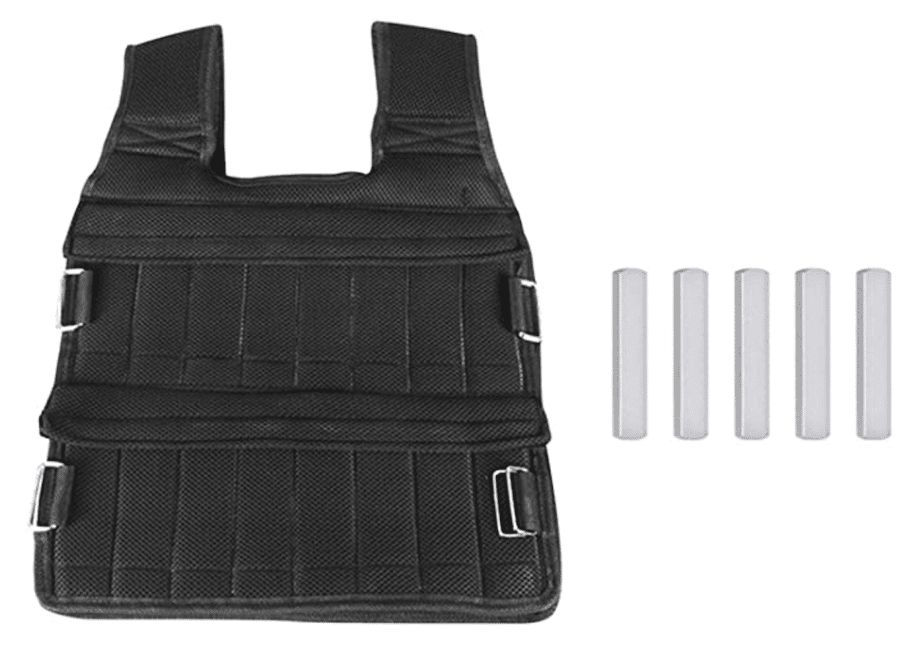Regularly used by the practitioners of CrossFit, the weighted vest (or weighted jacket) is also an interesting accessory for the body-building and the fitness. It allows indeed to intensify the physical activity and to increase the muscular development on the whole body. Would you like to equip yourself with a weighted vest to achieve your sporting goals? Discover the advantages and disadvantages of this equipment, as well as different bodybuilding exercises to perform.
What is a weighted vest?
A weighted vest is an accessory that can be slipped around the torso to make you heavier. It allows you to increase the difficulty of your bodyweight exercises, whether in the gym or at home.

A weighted vest has weights evenly distributed on the front and back. Some vests are worn at the head (like a tank top), while others have a grip strap for easy on and off. Generally, these weighted accessories are also equipped with an adjustable tightening system so that they can be adjusted to your body and do not restrict your freedom of movement.
It is possible to find weighted jackets of different weights, between 5 and 30 kilograms. As for the ballast system, it should be noted that the weight of certain models can be adjusted according to your needs thanks to small individual pockets in which sand bags are inserted. More expensive to buy, these vests are nevertheless more versatile and will accompany your progress for a long time.
How to choose a weighted jacket?
The choice of a vest depends primarily on your use. If your objective is to bulk upFor example, if you have a heavy model, you should choose one that increases the resistance during each exercise.
On the other hand, if you want to weigh yourself down during your running sessions to improve your cardio, you should opt for a light and compact jacket that is perfectly adapted to your body shape. This is also true for CrossFit, where you will be doing a lot of movements such as squats or jumps. However, the load should be higher, or scalable with a vest whose weight is adjustable.
There are several criteria to consider when choosing your weighted jacket. Ideally, it should :
- be easily adjustable,
- have well distributed weights,
- have a scalable load,
- be made of a light and breathable material.
Why and how to train with ballast?
Training with a weighted vest can achieve a variety of goals.
If you want to build muscle or gain strength, this accessory is particularly useful. You can increase the intensity of your sessions by increasing the weight lifted during the repetitions. It is also a great way to increase the muscle fibres in your lower body and abdominal muscles to work on your tone and explosiveness.
In addition to muscle gain, the weighted vest can also help you develop your endurance and cardiovascular capabilities. After several workouts with the resistance of a vest, your regular workouts will become much easier.
If for you doing sports means losing weight, the weighted vest is also beneficial. As part of a fitness program, the energy generated by wearing the vest will allow you to burn extra calories.
It can also be used during your warming up and will give you the possibility to complete your training by varying the sessions.
What kind of weight training exercises should I do with a weighted vest?
With a weighted vest, you can practice pull-ups in the gym. The force required to lift your weight will be greater, which is ideal in terms of muscle strengthening.
This is also the case for dips, an ideal exercise for developing your muscle mass in the pectoral, biceps and triceps. To work the explosiveness of the lower body and your deep muscles, the weighted box jumps are also an interesting alternative. Finally, jumping rope with a vest is ideal for developing your endurance and stamina.
If you prefer to work out at home without equipment, choose push-ups or squats with a weighted vest. These two movements are particularly complete and will allow you to develop your muscles within the framework of a fitness session at home. for a complete program with body weight, choose the ZERO GYM.
The same goes for the sheathing. Wearing a weighted vest will only make your abs work harder. And because working out at home can also be a cardio workout, don't underestimate the effectiveness of burpees!
Is the weighted vest really effective?
This accessory is extremely effective in helping you achieve various goals. Your exercises will become more difficult, which will push you to progress and eventually reach a plateau.
In other words, the weighted vest is equipment designed to help you improve your workouts.
The advantages and disadvantages of a vest
The main advantage of a weighted vest lies in the fact that it adds weight during your exercises, without hindering your movements, unlike dumbbells that you would have to wear for example. Very versatile, this accessory can therefore help you in your progression, whether to gain strength, develop your muscle mass, improve your cardiovascular capacities or lose weight.
In addition, this equipment is ideal for athletes who want to break up their training routine. It offers variations on many exercises and can therefore be easily integrated into a session.
On the other hand, adding weight puts extra strain on your joints and can increase the risk of injury. Therefore, always warm up properly and use the correct postures during your exercises. Also, don't hesitate to increase your rest periods. Finally, make sure you wear a vest that is the right weight for you. It is generally advised not to exceed 10 % of your own weight.
How to make your own vest?
You can make your own vest by using a vest with pockets and stuffing small plastic bags full of sand inside.
It is also possible to sew your own jacket to obtain a better distribution of the pockets, and thus of the weights.
To conclude, the weighted vest is an excellent training accessory that every athlete should include in his sessions. It offers many benefits and facilitates the progression, as well in bodybuilding as in CrossFit or in running. On the other hand, wearing a weighted vest requires perfect execution of the movements to avoid injuries.
Supplementary article :








